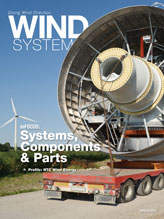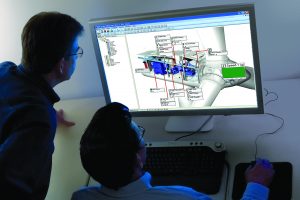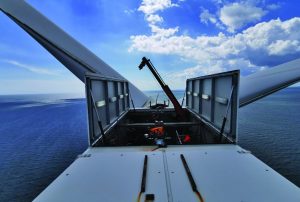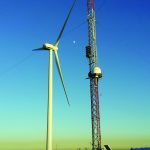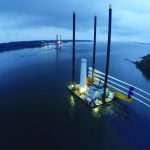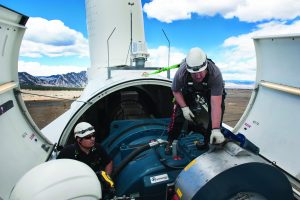To avoid the need for costly repair or even replacement, sophisticated equipment in any industry should be accurately monitored and observed to identify maintenance needs before they escalate into true problems or equipment failures.
Vibration monitoring is one of the most effective indicators of operational issues and the need for preventative maintenance in wind power, offering a snapshot of any current issues, as well as what may arise in the future.
Real-time vibration condition monitoring allows users to prevent downtime for their systems, maximize utilization, and protect their equipment in real time — both before and after installation — ultimately reducing the cost of operation and improving efficiency across the board.
Importantly, a monitoring system with a user-friendly interface that does not require a new subset of tasks or skills will not only improve the way companies can operate moving forward, it will enable them to also maximize the potential of their current configuration. Studies have shown having an active and practical condition monitoring system results in a more efficiently operated power-plant system.

Preventative Maintenance
When is the best time to fix a problem? Before it ever occurs. The possibility of installing faulty or worn components can cause untold damage to a company’s systems, other equipment, and its bottom line. Without a preventative maintenance program in place, wind-power companies place themselves at much greater risk of incurring unnecessary costs.
If companies can observe and audit the status of equipment before their personnel can lay a hand on it for installation, by default, costs are reduced, and productivity is increased. Through the accurate and timely monitoring of a particular variable, such as vibration, over the lifespan of the materials, companies can effectively keep tabs on their wind systems from the first day of transport through the day it is disassembled.
By measuring both impact and low-frequency vibration, engineers can easily identify machine deterioration during operation. However, it is also important to allow users to detect potential shipping damage on a product before it is installed. This protects equipment, prevents unplanned downtime, maximizes utilization, and reduces the cost of operation.
By monitoring equipment vibration during transportation and capturing impact alerts and data, a truly effective monitoring system provides warning of potential damage to equipment before it is installed. The impact-monitoring profile of a piece of equipment changes when it is being transported as a component versus when it becomes part of a larger operational system, so being able to adjust the settings of a single monitoring system to correlate to the equipment’s arrangement provides users the ability to monitor their equipment effectively throughout the journey.
Speed and Accuracy
Once equipment is operational, effective monitoring programs rely upon accurate data and timely alerts to any change or irregularity in that data. Ideally, service and maintenance team members are alerted electronically through email or text alerts when there is a change to the vibration data that signifies a potential issue. That team can then perform the analysis required to determine maintenance or component replacement needs before a failure occurs.
Vibration and shock monitoring is an integral part of machine condition-monitoring programs. Change in equipment vibration serves as an early warning of a decline in operating function, and it signals the need for maintenance to avoid more serious faults and/or failure. All equipment that has belts, gears, bearings, drive motors, and other moving components has a “normal” range of vibration during operating cycles. Any system comparison of vibration data must use a starting point, or normal range, to record peaks and valleys in vibration, should they exist.

This “normal” range is then monitored at a baseline level and sets a range for regular performance from which the smallest, and more significant, changes may be detected. The shocks and normal wear-and-tear of usage that equipment experiences over time generate changes in vibration pattern.
By establishing these “normal” ranges on various pieces of equipment, a condition-monitoring system can differentiate which impact and vibration levels are of concern based on the particular profiles.
Real-Time Observation
An effective monitoring system will enable real-time observation of low-frequency shock and vibration to identify these changes as they happen. If the system perceives vibration outside the normal range, it will provide an alert to the user, helping to identify potential equipment faults before they occur.
Through the use of detailed and specific profiles that monitor the day-to-day operation of users’ equipment in stationary mode, first-rate monitoring systems allow companies to use low-frequency vibration and shock detection to drive preventative maintenance before expensive repairs or even equipment replacement is required. Regardless of industry, maximizing utilization and effective resource management is a tent-pole strategy of successful operations.

Some vibration-monitoring system software can be easily configured to meet a company’s specific needs. In transportation or stationary mode, the user sets impact-event maximum peak values (on the X, Y, and Z axes) with a subsequent warning and alarms levels based on the specific application and the product being monitored. Systems that can be customized specifically to a user’s existing system when requested ease the headaches of a transition in new equipment or vibration monitoring system installation.
Powerful and Compact
While imbued with immense power, the monitoring unit should also ideally be compact enough to perform its tasks without requiring excess space or weight adjustments and be able to withstand a wide temperature range while remaining viable in extreme conditions during both transport and use. With the prescribed ranges for operation and vibration detection defined, intelligent condition-monitoring systems can then adjust reporting structures and frequency as external factors allow.
When used during transportation, an effective monitoring system will allow the user to record vibration events tracked against preset, acceptable ranges — as well as the necessary warnings and alerts — are defined. In the same device, while employed in stationary use, the user could record an almost limitless number of events that raise alarms and prompt any necessary action.
An effective, state-of-the-art vibration monitoring system combines all these elements in a single easy-to-use, customizable, powerful and compact device. OpsWatch, from ShockWatch, sets an industry standard in measuring both impact and low-frequency vibration to identify machine deterioration during operation and detects potential shipping damage to protect equipment, prevent unplanned downtime, maximize utilization, and reduce the cost — making it an invaluable asset to leaders in the wind-power industry.
















